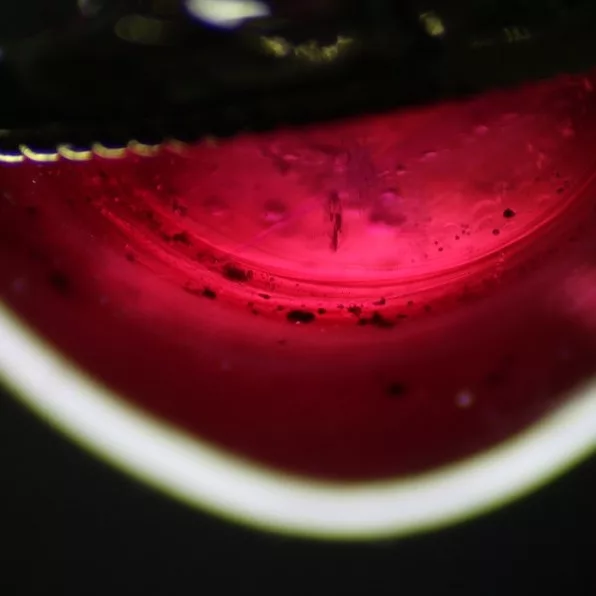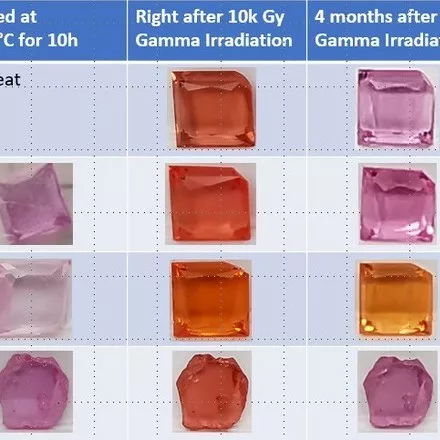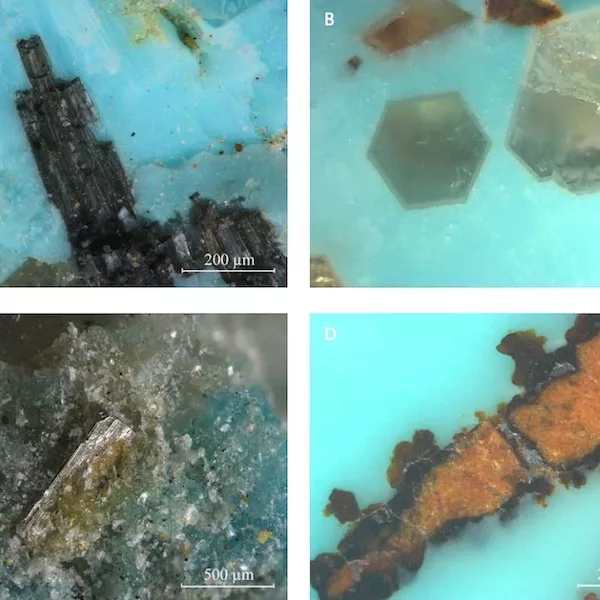Snapshot of rubies from 1915
Keywords: Beaulieu, SS Persia, Natural ruby, Verneuil
In 2008 the Honourable Mary Montagu Scott oversaw the opening of a permanent exhibition at Buckler’s Hard Maritime Museum on the Beaulieu Estate about the steamship SS Persia (Figure 1).
SS Persia, owned by Peninsular & Oriental (P&O) Steam Navigation Company, left Tilbury, London on the 18th December 1915, sailing via Gibraltar, Marseille, and Malta and heading for Alexandria and the Suez Canal on its way to India. On the 30th December 1915 it was torpedoed by a German U-boat south-east of Crete. The torpedo caused an explosion in the steam boiler, which meant it sank quickly. Only four lifeboats launched. Of the 500-507 people on board 156 were rescued by HMS Mallow and 11 by SS Ning Chow (Wren, 2020).
Deep Tek Ltd, run by Alec and Moya Crawford located the wreck in 2001 at a depth of 2800 metres and in 2003 they set about salvaging the contents of the ship’s strong room. They designed equipment including a fibre hoist rope with their patented winding drum and also a heavily engineered grab doubling as a cutting tool. The salvage exercise in itself enhanced Deep Tek’s commercial reputation but an added motivation was the rumour that the strong room contained gold and silver bars, Egyptian coins and precious gemstones belonging to Maharajah Sir Jagatjit Singh of Kapurthala. The bullion room was situated five decks down through 11mm steel plate and 60mm concrete. Many personal artefacts were recovered, and on the last grab of their charter period brought up gemstones – over 300 natural and synthetic rubies, as well as 44 moonstones, five amethysts, and one garnet. No other sign of the Maharajah’s ‘treasure’ was found.
It is known that the Maharajah and his wife and most of his entourage did not join the ship at Marseille as planned. His wife travelled on a Dutch ship instead. However, members of his staff did travel on SS Persia, which allowed the rumours to persist that treasures might still be onboard.
Deep Tek Ltd wished to find a home for all the artefacts they had recovered. John Douglas-Scott-Montagu, 2nd Baron Montagu of Beaulieu had boarded SS Persia in Marseille with his private secretary Eleanor Velasco Thornton (at some stage she modelled for the sculptor Charles Sykes and is believed to be the inspiration for Sykes’ Spirit of Ecstasy bonnet ornament for Rolls-Royce cars).
Baron Montagu was returning to India after lobbying Parliament and the House of Lords on behalf of the Viceroy of India, Lord Hardinge, to provide vehicles and airplanes for the Indian Army. Baron Montagu survived the sinking, in part due to wearing a Gieve inflatable waistcoat. Eleanor Thornton did not survive.
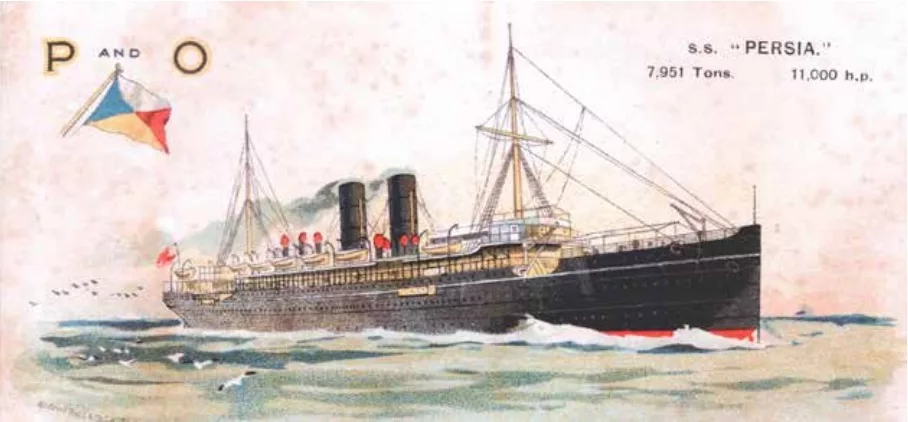
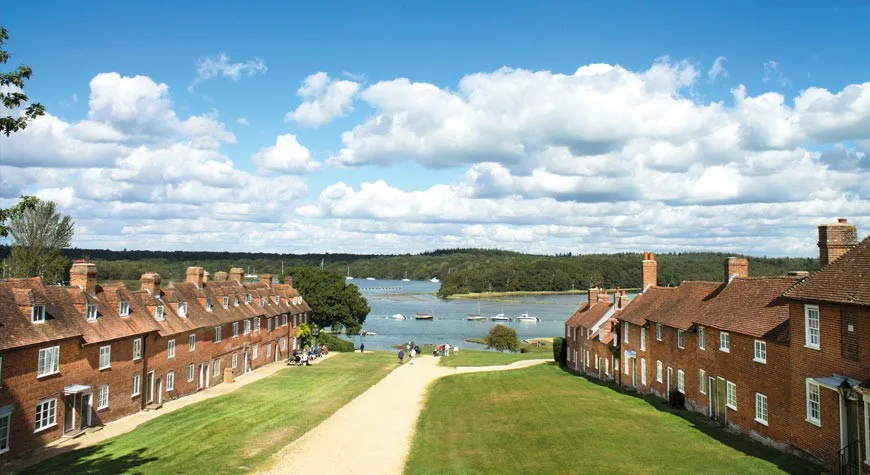
The Beaulieu estate, centred around the village of Beaulieu, is situated to the west of Southampton on the south coast of England. On the estate is Palace House, home of the Montagu family, a Motor Museum and Buckler’s Hard. The latter (Figure 2) was a shipbuilding village, where from 1744 until 1814 the carcases of wooden naval ships were built on launchways sloping down into the Beaulieu River. They were then towed to Portsmouth to be fully fitted out. The facilities were once again used in the Second World War but it was the 19th/20th Century past-times of tourism and sailing that revitalised the village in the area (Bucklers’s Hard catalogue). The personal connections of the Montagu family and the existing Museum of Maritime History, which was opened in 1963, provided a logical destination for the artefacts and gemstones, and for the telling of the SS Persia’s story.
The first author visited the Museum on several occasions and his interest was particularly piqued by the synthetic rubies, but also on the origins of the natural rubies recovered.
All of us when identifying synthetic rubies wonder if inclusions of tight curved lines and heavy clouds of bubbles are examples of early synthetics (Figure 3). This year the first author was kindly offered the chance to re-examine the rubies recovered. I say re-examined since after the recovery of all the gemstones in 2003 they were tested by Alan Hodgkinson and Brian Jackson, well known Scottish gemmologists, towards the provision of a valuation prepared by Adrian Smith for Moya Crawford of Deep Tek Ltd.
The aim of the examination by the first author was to confirm the limited number of countries from which natural rubies were sourced at the time. With regard to the synthetic rubies can we learn anything about early historical production?
The red gemstones were tested by hand spectroscope, ultra-violet light and microscope. The screening under shortwave ultraviolet light allowed a quick separation of iron-rich rubies from iron-poor and chromium-rich natural rubies and synthetic rubies. The rubies inert to SW UV were checked with a hand spectroscope – one was found to be a garnet.
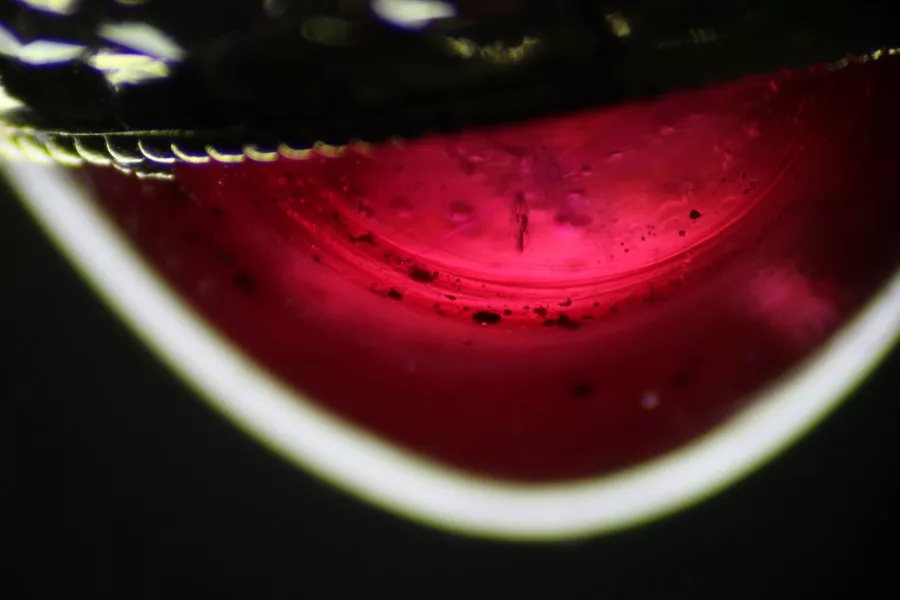
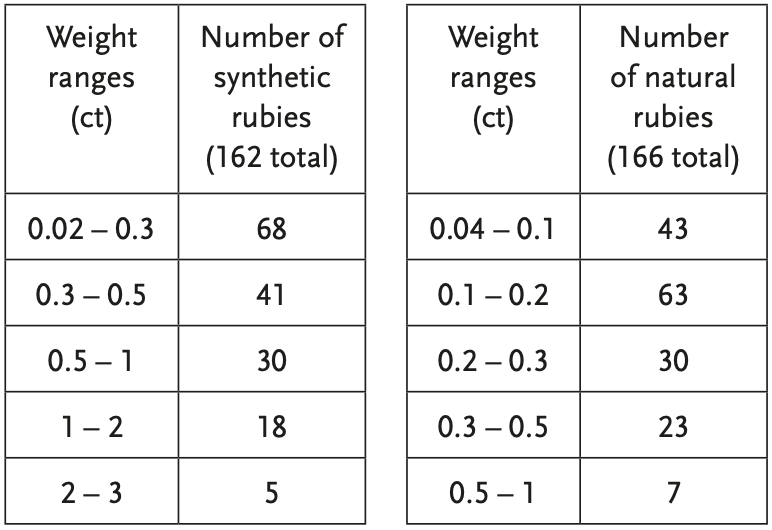
All the natural rubies were small in size (Table 1). Those inert under SW UV were likely to be of a magmatic origin. Some were quite clean but many showed inclusions of laths (boehmite crystallisation along overlapping twin planes), feathers, and poached eggs (feather/fingerprint surrounds to crystals/negative crystals), which accords with those expected in Siam or Thai rubies, which was historically the main source at the time for these types of rubies. The brighter SW & LW UV fluorescing natural rubies displayed needle silk clusters, crystals and roiling typical for a Burma origin. Some pinker stones could be interpreted as being of Sri Lankan origin. This superficial study seems to confirm Thailand, Burma and Sri Lanka as known origins for ruby and pink sapphire at that time.
Turning to the synthetic rubies, a consideration of early history is needed. Auguste Victor Louis Verneuil worked at the Paris Natural History Museum under the directorship of Edmund Frémy (Evans, 2020). The Geneva rubies and Frémy’s experiments were superceded in 1891 by Verneuil’s approach of dropping powdered feed down the central tube of the blow pipe. This was revealed retrospectively in two sealed memoires at the Academy of Sciences from 1904 and 1910. It is stated that Verneuil could produce boules of 6mm diameter in a period of two hours (Evans, 2020, p 40). It would seem that between 1904 to 1910 some commercial production takes place – maybe to take advantage of the situation before his techniques were published. No clear figures are obtainable.
An unattributed quote (https://www.youtube.com/watch?v=cDH3upLgc7A) mentions 1000kg production of boules in 1907 and rising to 3200kg in 1912. In the same quote by 1910 there is an estimate of 30 furnaces being operated. By 1914 Hrand Djevahirdjian had started his factory in Monthey Switzerland, but had experimented himself before this as he watched the synthesizers in Paris. Instinctively one feels that Djeva synthetic rubies would have needed more time for commercial quantities to be dissipated into the trade channels of the time and hence Verneuil is the likeliest commercial manufacturer. Verneuil noted that there were fewer bubbles by slowing the growth process but more curved striations occurred when the growth was speeded up.
The larger five synthetic rubies all showed bubble inclusions. Were larger stones rarely clean of bubbles at that time? In the smaller stones 0.02 – 0.50 ct few were inclusion free. The interesting ones showed tightly curved bubble clouds following the growth structures covering most of the stone areas, typical of stones cut from small boules. Unusual in such small stones were the circular growth patterns, indicating it had been cut across the centre of the flame fusion boule (Figure 3). Early on Verneuil discovered that splitting the boules lengthways released the tension build up within its structure and forestalled random fracturing. It seems fair that the circular growth lines are an indication of smaller early boules, where splitting was not carried out. The presence of cracks in many of the synthetics reflects that the issue of random fracturing was still being addressed. The fact that the majority of the synthetics are small in size, possibly reflects the prevailing need to recover as much as possible from the limited production. Many stones show curved swathes of growth structure rather than the more common less discernible tightly formed growth lines resembling the grooves on a vinyl record, which we mainly see today. Does this point towards a manufacturer battling against fast growth times?
In the absence of historical records these synthetics do provide us with an indication that the structures reflect smaller sizes and coarser growth. Earlier finds and in similar large numbers would be of interest towards building a better picture.
The recovery of the synthetic rubies provides their provenance but only as the result of a tragic episode of war. The loss of life has been remembered firstly by a memorial at sea in 1966 and then another in 2016 at the Buckler’s Hard Maritime Museum, marked by a permanent wall-mounted sundial. Descendants of SS Persia passengers and other visitors can purchase items of specially designed synthetic ruby mounted jewellery as a memento – proceeds going to charity.
We conclude on the question of ownership of the gemstones. It is not known to whom they belonged. Understandably the rumours associated with the Maharajah of Kapurthala means he is strong candidate for being the owner. Is it more likely that he would have had items of mounted jewellery amongst his belongings as well as loose gemstones? Any number of people may have been taking the gemstones for mounting to India. Then of course the gemstones may have simply been contained in an item of mail bound for India.
References:
- Buckler’s Hard. Published by Beaulieu Enterprises Limited, www.bucklershard.co.uk
- Evans, James, 2020. The History of Synthetic Ruby. ISBN 978-1-91616-52-0-5
- Wren, Alan, 2020. The Ambush of SS Persia (Voices from a Lost Liner) ISBN 978-1-8380408-0-2 (Paperback)

